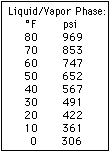I just filled my first keg today!!
I have a question about the CO2 tank....I have it in the fridge with the keg and I'm not sure if this is normal....When I first opened the cylinder, the gauge on the tank side said it was in the full range, no problems. It's been going for a few hours now and the gauge has droppped significantly on the tank side (beer side is holding fine). I did do a leak check and all that before I filled the keg and everything was ok. I'm wondering if the 'loss' of pressure is just normal because of the tank being in the fridge or if I have a serious problem? Thanks for the help!!

I have a question about the CO2 tank....I have it in the fridge with the keg and I'm not sure if this is normal....When I first opened the cylinder, the gauge on the tank side said it was in the full range, no problems. It's been going for a few hours now and the gauge has droppped significantly on the tank side (beer side is holding fine). I did do a leak check and all that before I filled the keg and everything was ok. I'm wondering if the 'loss' of pressure is just normal because of the tank being in the fridge or if I have a serious problem? Thanks for the help!!


























![Craft A Brew - Safale BE-256 Yeast - Fermentis - Belgian Ale Dry Yeast - For Belgian & Strong Ales - Ingredients for Home Brewing - Beer Making Supplies - [3 Pack]](https://m.media-amazon.com/images/I/51bcKEwQmWL._SL500_.jpg)































